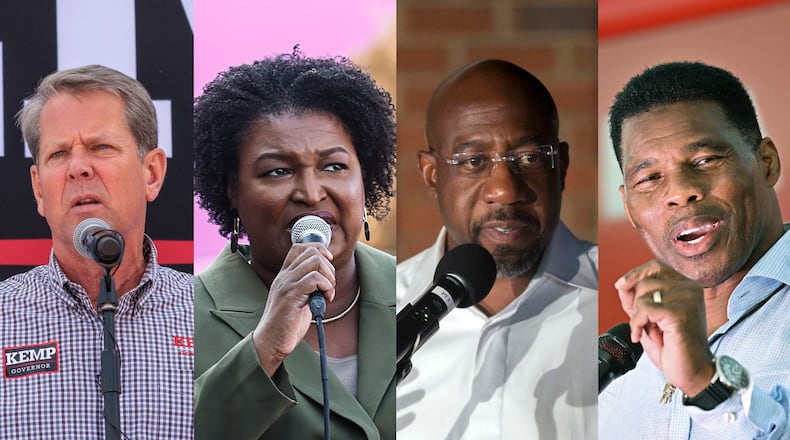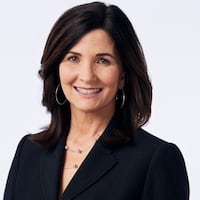It’s easy to let your eyes glaze over when you think about the incredible sums of money that flooded into Georgia during the 2022 elections — $650 million for the governor and U.S. Senate races alone. But taken together, all of the dollars that flooded into Georgia could have gone a long way toward solving some of the state’s problems instead.
Three factors combined this year to make 2022 the most expensive non-presidential campaign year in Georgia history.
The first was the 2010 Citizens United decision from the U.S. Supreme Court that allowed unlimited outside spending on federal campaigns.
That was followed in 2021 by a Georgia law, passed by the GOP-led General Assembly and signed by Gov. Brian Kemp, that allowed unlimited donations for certain campaigns at the state level, too.
Finally, Georgia’s status as a battleground state meant that donors from across the country felt like they could make a real difference here.
The end result was an explosion of money in 2022 for both parties and in nearly every race on the ballot.
The rematch last year between Gov. Brian Kemp and Democratic nominee Stacey Abrams nearly quadrupled the amount of money the campaigns had raised just four years earlier — from $48 million combined to more than $190 million combined in 2022.
Abrams raised a record $113 million between her campaign committee and her leadership committee, while Kemp pulled in a total of $78 million. The two new leadership committees in the race accounted for more than $100 million of those sums.
Compare that to just two cycles earlier, in the 2014 governors race between then- Gov. Nathan Deal and Democratic nominee Jason Carter, which cost about one-tenth of the Kemp-Abrams race, with $22 million combined.
The most expensive Georgia race in 2022 was the U.S. Senate contest between U.S. Sen. Raphael Warnock, who raised an astonishing $175.7 million (the most of any Senate campaign in the country), and GOP nominee Herschel Walker, who raised $58.7 million.
And add on top of all of that more than $200 million in outside spending from more than 200 groups around the country all looking to sway the Georgia contest one way or another.
Even races down the ballot hauled in huge amounts of cash.
U.S. Rep. Marjorie Taylor Greene’s Democratic challenger, Marcus Flowers, raised $16.9 million — more than most statewide candidates — while Greene pulled in $12.5 million, but won with twice as many votes anyway.
Outside money played a big role in smaller races, too. Sam Bankman-Fried, the disgraced Bahamas-based crypto investor, spent $1.9 million in Georgia supporting U.S. Rep. Lucy McBath in her 7th Congressional District Democratic primary against U.S. Rep. Carolyn Bourdeaux, although Bankman-Fried never publicly explained his interest in the Gwinnett-based district in the first place.
And former U.S. Sen. Kelly Loeffler spent millions of her own money, first to register and engage conservative voters around the state, and then to help elect GOP state senate candidates.
She said in an interview that the Citizens United decision, along with Georgia’s new leadership committees, have “changed the landscape” for donors and candidates alike.
The money all starts to run together until you think about what it could have paid for in Georgia instead — including many of the promises candidates made on the campaign trail.
With a minimum of $650 million spent on the campaigns, Georgia could fully expand Medicaid for nearly three years, based on the Georgia Budget and Policy Institute estimate that expansion would cost about $240 million per year.
If you’d rather focus on education, how about a $5,000 bonus for Georgia’s 120,00 teachers, who are still trying to help students make up learning losses from COVID?
With $650 million, you could almost pay to build another massive sports complex for a professional sports team. Truist Park cost an estimated $672 million and has been a lot more entertaining than the six months of ads we got at the end of the Georgia campaigns.
Alternatively, the money could buy dinner for all 6 million Georgia adults; put $100 in college savings accounts for every child under 5; or build 100 new fire stations across the state. There is no end to the ways you could improve Georgians’ lives with all of the cash that goes into campaigns.
The big winners in the new normal are the campaign consultants who tell candidates how to spend their money, the ad makers who craft the digital and television ads we see, and of course, the TV stations who run them all.
The Atlanta Journal-Constitution reported that there was so much demand for air time on WSB-TV at the height of the campaign that the station added a 3:00 newscast in the fall and extended the 11:00 news by 10 minutes, just to make space for all of the political commercials.
In reality, it wouldn’t be legal for campaigns to pay for state services. And candidates can’t buy dinner for votes.
But we’ve gotten to such an absurd point with campaign finance laws that we’re now spending more money on political campaigns than on the problems we’re electing candidates to solve.
About the Author
Keep Reading
The Latest
Featured




